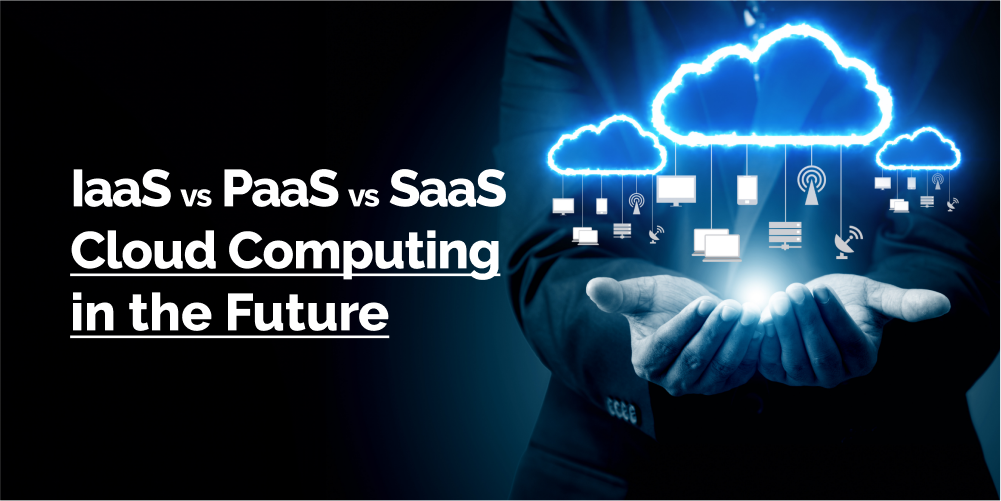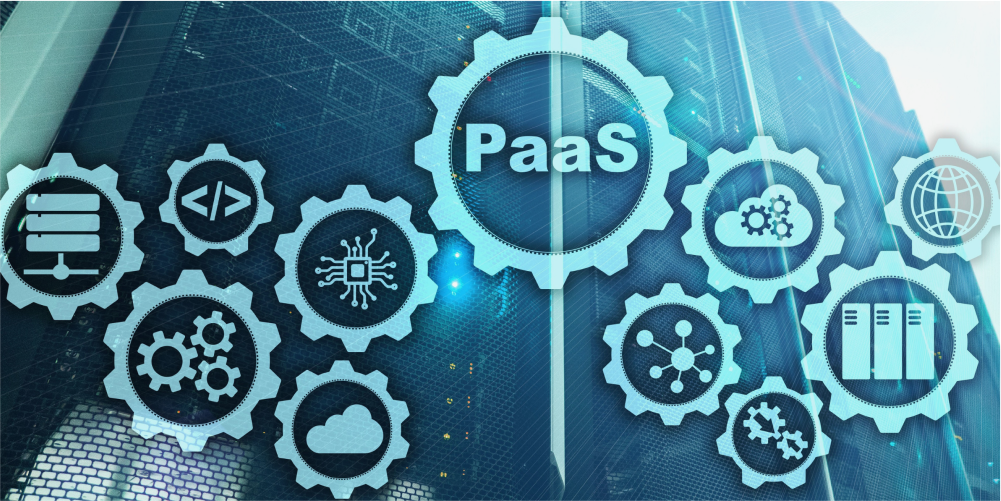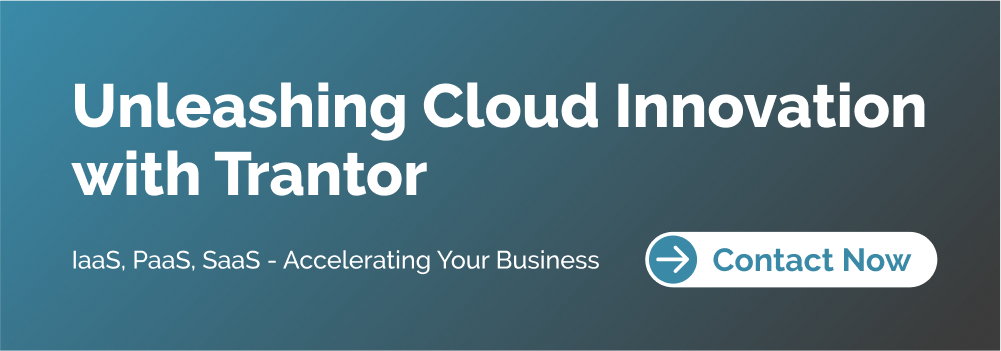Cloud, zBlog
IaaS vs PaaS vs SaaS: The Future of Cloud Computing in 2024

Introduction: IaaS vs PaaS vs SaaS
Cloud computing has revolutionized the way businesses operate, enabling them to scale their operations, reduce costs, and increase agility. As we approach 2024, the cloud computing landscape continues to evolve, with Infrastructure as a Service (IaaS), Platform as a Service (PaaS), and Software as a Service (SaaS) playing pivotal roles in shaping the future. In this blog post, we’ll delve into the latest trends, market projections, and the future of these cloud service models. Additionally, we’ll explore the distinct advantages and use cases of each cloud service model— IaaS vs PaaS vs SaaS— to provide a comprehensive understanding of their functionalities and strategic applications in modern business environments.
IaaS: The Foundation of Cloud Computing

Infrastructure as a Service (IaaS) is the bedrock of cloud computing, providing businesses with on-demand access to computing resources such as virtual machines, storage, and networking. The IaaS market is expected to be a trillion-dollar market by 2025, underscoring its significance in the cloud computing ecosystem.
The IaaS market continues to experience strong growth, with an estimated Compound Annual Growth Rate (CAGR) of around 25-30% . This growth is fueled by the increasing demand for scalable and flexible infrastructure solutions, as businesses strive to keep pace with rapidly changing market conditions and customer demands.
The IaaS market is dominated by a few major players, including Amazon Web Services (AWS), Microsoft Azure, and Google Cloud Platform (GCP). These providers have invested heavily in expanding their global infrastructure, offering a wide range of services, and enhancing their security and compliance capabilities.
One of the key advantages of IaaS is its ability to provide businesses with a pay-as-you-go model, allowing them to scale resources up or down based on their needs. This flexibility translates into cost savings, as businesses only pay for the resources they consume, eliminating the need for significant upfront investments in hardware and infrastructure.
PaaS: Empowering Developers and Accelerating Innovation

Platform as a Service (PaaS) is a rapidly growing market, expected to reach $70 billion by 2024. PaaS caters specifically to developers, providing them with a comprehensive platform for building, deploying, and managing applications.
With a CAGR exceeding 30%, PaaS is experiencing explosive growth as businesses recognize the value of streamlining application development and deployment processes. By abstracting away the complexities of infrastructure management, PaaS allows developers to focus solely on writing code and delivering applications faster.
Major PaaS providers, such as AWS Elastic Beanstalk, Google App Engine, and Microsoft Azure App Service, offer various tools and services to support various programming languages, frameworks, and development environments. These platforms often include integrated development environments (IDEs), application monitoring and scaling tools, and seamless integration with other cloud services.
SaaS: The Future of Software Delivery

Software as a Service (SaaS) is the most mature and largest cloud service model, expected to reach $671 billion by 2025. SaaS offers a subscription-based model for delivering software applications over the Internet, eliminating the need for on-premises installation and maintenance.
With a steady growth rate and a CAGR of around 15-20%, SaaS continues to gain traction among businesses of all sizes. The benefits of SaaS, including ease of use, scalability, and lower upfront costs, have made it a popular choice for a wide range of applications, from customer relationship management (CRM) and enterprise resource planning (ERP) to collaboration and productivity tools.
SaaS providers, such as Salesforce, Microsoft Office 365, and Google Workspace, have revolutionized the way software is delivered and consumed. These providers continuously update and enhance their applications, ensuring that users always have access to the latest features and security updates without the need for complex deployments or upgrades.
The Hybrid Cloud Approach
While IaaS vs PaaS vs SaaS offer distinct benefits, many businesses are adopting a hybrid cloud approach, combining these service models to optimize flexibility and control. By leveraging a hybrid cloud strategy, businesses can take advantage of the scalability and cost-effectiveness of public cloud services while maintaining sensitive or mission-critical workloads on private cloud or on-premises infrastructure.
This approach allows businesses to select the most appropriate cloud service model based on their specific requirements, balancing factors such as performance, security, compliance, and cost. For example, a business might use IaaS for its core infrastructure, PaaS for application development, and SaaS for collaboration and productivity tools.
Security: A Paramount Concern

As businesses increasingly rely on cloud computing, security remains a top concern across all service models. Cloud providers have invested heavily in robust security measures, including data encryption, identity and access management, and advanced threat detection and prevention mechanisms.
However, security is a shared responsibility between the cloud provider and the customer. While providers are responsible for securing the underlying infrastructure and platform, customers are accountable for securing their applications, data, and access controls.
To address security concerns, cloud providers are continuously enhancing their security offerings, providing customers with advanced security tools, compliance certifications, and best practices for secure cloud adoption.
The Evolving Landscape
The cloud computing landscape is constantly evolving, with new service offerings and technologies emerging. Some notable trends shaping the future of cloud computing include:
- 1. Edge Computing: As the Internet of Things (IoT) continues to grow, edge computing is gaining traction, enabling data processing and analysis closer to the source, reducing latency and bandwidth requirements.
- 2. Serverless Computing: Serverless computing, also known as Function as a Service (FaaS), allows developers to run code without provisioning or managing servers, further abstracting infrastructure complexities.
- 3. Artificial Intelligence and Machine Learning: Cloud providers are integrating AI and ML capabilities into their offerings, enabling businesses to leverage advanced analytics, predictive modeling, and automated decision-making.
- 4. Containers and Microservices: Containerization and microservices architectures are becoming increasingly popular, enabling faster application development, deployment, and scaling.
- 5. Multi-Cloud and Cloud Portability: As businesses adopt multiple cloud providers, the need for seamless portability and interoperability between cloud environments is becoming more critical.
Conclusion
As we approach 2024, the future of cloud computing is undoubtedly bright. When it comes to IaaS vs PaaS vs SaaS, each of them is playing a crucial role in shaping the way businesses operate and innovate. While IaaS continues to be the foundation, providing scalable and flexible infrastructure, PaaS empowers developers to accelerate innovation, and SaaS revolutionizes software delivery.
The cloud computing market is experiencing rapid growth, driven by the increasing demand for agility, cost-effectiveness, and scalability. As businesses navigate this evolving landscape, they must carefully evaluate their specific requirements and adopt a strategy that leverages the strengths of each service model, whether through a single cloud approach or a hybrid cloud strategy.
Ultimately, the future of cloud computing lies in its ability to enable digital transformation, drive innovation, and provide businesses with the agility and scalability required to thrive in an ever-changing and competitive market.
Trantor has been at the forefront of this rapidly evolving landscape. With a deep understanding of the intricacies of IaaS, PaaS, and SaaS models, Trantor offers a comprehensive suite of cloud services tailored to meet the diverse needs of businesses across various industries. From scalable infrastructure to developer-friendly platforms and innovative software applications, Trantor’s offerings empower organizations to embrace digital transformation, enhance agility, and drive innovation. As a trusted partner, Trantor remains committed to staying ahead of the curve, continuously investing in cutting-edge technologies, and delivering secure, reliable, and cost-effective cloud solutions that enable its customers to thrive in the dynamic digital era.




